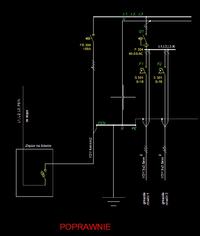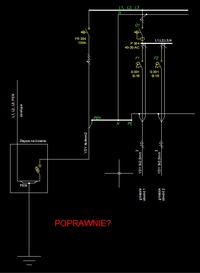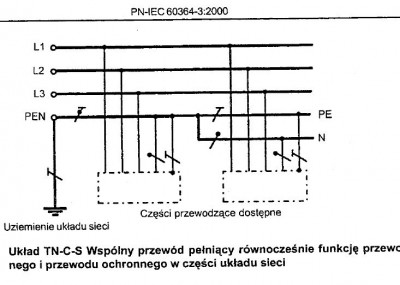Hello dear friends!
Please analyze the two drawings below.
Briefly about the topic. There is an old house and a connector on the wall. Power supply from the pole with a 4-wire cable. Power supply to the apartment on the first floor via a 4-wire cable.
A new TN-S installation and switchgear prepared for TN-S have been installed in the apartment.
I understand that the most optimistic solution is to ground the PEN distribution point, i.e. connect PE from the ground electrode to the board.
So this is the arrangement:
Rules for pasting photos are here: https://www.elektroda.pl/rtvforum/topic1491634.html
[retrofood]
What if it is not possible to conduct the EP? Will grounding the N point in the connector do the trick?
What I mean, of course, is whether the differential will work, because that`s what the problem comes down to.
I will be grateful for factual answers, because there are various versions on the forum - extremely different from each other.
Thanks for the help in advance.
EDIT: there is an error in the drawing: the N wire in the switchgear is disconnected with a 4-pole disconnector.
EDIT2: Sorry, I`m pasting the pictures correctly
layout 1:

layout 2:

Please analyze the two drawings below.
Briefly about the topic. There is an old house and a connector on the wall. Power supply from the pole with a 4-wire cable. Power supply to the apartment on the first floor via a 4-wire cable.
A new TN-S installation and switchgear prepared for TN-S have been installed in the apartment.
I understand that the most optimistic solution is to ground the PEN distribution point, i.e. connect PE from the ground electrode to the board.
So this is the arrangement:
Rules for pasting photos are here: https://www.elektroda.pl/rtvforum/topic1491634.html
[retrofood]
What if it is not possible to conduct the EP? Will grounding the N point in the connector do the trick?
What I mean, of course, is whether the differential will work, because that`s what the problem comes down to.
I will be grateful for factual answers, because there are various versions on the forum - extremely different from each other.
Thanks for the help in advance.
EDIT: there is an error in the drawing: the N wire in the switchgear is disconnected with a 4-pole disconnector.
EDIT2: Sorry, I`m pasting the pictures correctly
layout 1:

layout 2:





